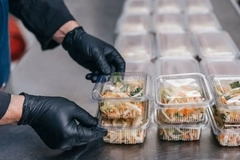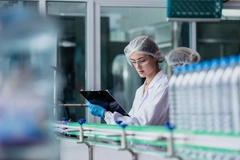Microplastics in the stomach: Lessons from Turkey’s research on pollution in human cadavers

A recent study by Turkish scientists revealed “the first” evidence of microplastics in the human stomach. Analysis of dozens of dead bodies showed microplastic presence in all samples, though at lower rates than previous studies have estimated. The study authors say the findings exemplify the need for reusable packaging systems.
This study extracted 97 microplastic particles from stomach contents in 26 cadavers, revealing a “universal prevalence” of microplastics in the bodies.
Morphological analysis of the extracted particles also unveiled distinct shapes, with fibers constituting the majority (52%), followed by fragments (39.8%) and films (8.1%). The estimated daily intake of microplastics was 32.2 particles per day.
Sedat Gündoğdu, one of the study’s authors, tells Packaging Insights: “As someone who has been studying this issue for a long time and has studied almost all the ways in which humans are exposed to plastic, I am not surprised. But what is surprising is that this has not been studied before.”
While the discovery of microplastics in the cadavers was “significant,” the research also showed that levels were lower than those found in previous studies.
But Gündoğdu says this is likely a reflection of methodology in separate studies and that microplastic levels could indeed be as high as previously thought.
“This is because the methods used in some studies are still premature and the papers provide little information about the limitations of the methods. Besides, all this clearly tells us that we have a serious microplastic problem,” he says.
Packaging implications
Plastic pollution in Turkey is a major social and environmental issue. Much of Europe’s waste is sent to specific regions of the country — notably the city of Adana — where it is usually dumped or incinerated, spreading particles through the land, waterways and air.
“One of the main sources of plastic pollution is packaging. This is because almost all packaging is plastic and single-use, which contaminates the food with microplastics. It’s time to reduce the production of plastic packaging and consider redesigned alternatives that release less microplastics,” says Gündoğdu.
“The alternative — refillable packaging — needs to be prioritized. Otherwise, overpackaging and microplastic and chemical leakage of these packages will create more serious risks to human health. The results we have shown in the stomach today may actually be the tip of the iceberg.”
Gündoğdu emphasizes that the UN Plastics Treaty negotiations, which are set for a final round next month, will be pivotal in tackling these issues.
“If these negotiations result in a legally binding text that includes a production reduction and transparency-based producer responsibility, then we may be worrying less about microplastics in the near future,” he says.
In terms of further research, he says this is already the “final stage” — “hundreds of researchers around the world are investigating the effects of plastic on organisms and publishing their findings. The next stage is for policymakers to take these findings into consideration and follow scientific knowledge.”
“We hope that our work helps to understand the risk posed by plastic. Plastic is now everywhere and we now have enough evidence to take precautions against it. We better take precautions before humans turn into homo plasticus.”











